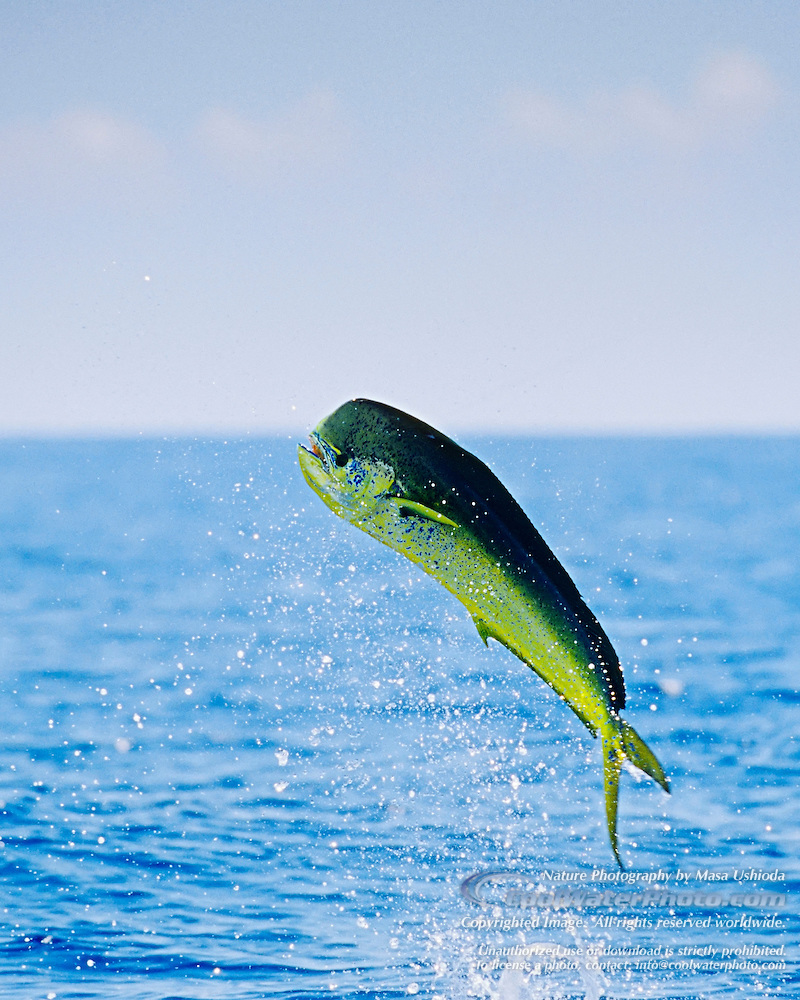

It’s not uncommon for anglers to catch some with holes pierced through them, presumably by billfish chasing them.

A chunk of ballyhoo is simply impaled on a 4/0 to 6/0 live-bait-style hook attached to a 50-pound-test leader on a 12- or 20-pound-class spinning outfit. Especially when small, they are preyed upon by just about every other fish that’s bigger. This dolphin standard, usually reserved for when the magic runs out of the jigs, is still a favorite for catching school fish. The variety of their diet is matched by the number of predators that eat them. If it swims and is small enough to fit in its mouth, it’s fair game, and that includes smaller Mahi-Mahi. In some parts of the world, they are called dorado, which can be confusing because a popular freshwater fish species in some countries is also called dorado. Other nicknames for the fish include chicken dolphin and green dolphin. The name Mahi-Mahi is often spelled as Mahi mahi, mahi-mahi, or mahimahi. Mitchell Prokasy caught this nice Mahi-Mahi on baitcasting tackle. Their population is abundant in the western Atlantic from Nova Scotia to Argentina, in the Gulf of Mexico, and in the Caribbean Sea. Big fish are also referred to as “gaffers” because they must be landed with a gaff, instead of “bailed” at the stern like smaller fishĭolphins are found throughout the open ocean in tropical and subtropical waters. They have a much more rounded head than bulls. They call adult males bulls, thanks in part to the blunt, aggressive looking forehead on bigger males.

Anglers call the smaller ones peanuts or bailers.

Mahi-Mahi are often called dolphinfish or dolphin, and are not related to porpoises, which are also often called dolphins. Their eyes are small and almost in line with their mouths. Gulf of Mexico, Costa Rica, Hawaii and Indian Ocean.These fish have a single dorsal fin that runs almost the entire length of their backs, starting above the eye and ending just in front of the tail. The currently recognized species in this genus are: Image Why the mammal and the fish were both called "dolphin" is uncertain, but theories include that dolphinfish communicate using high-pitched sounds similar to a dolphin, and they are about the size of a small dolphin, or due to dorado (Spanish for "golden") having been purportedly used historically in Spanish for both dolphins (normally delfín) and dolphinfish. The origin of the name "dolphinfish" is recent, to avoid confusion with dolphins, as the traditional name of the fish was also "dolphin". The dolphinfish can reach up to about 40 kilograms (88 lb), and are some of the fastest-growing species in the ocean.ĭespite the name, dolphinfishes are unrelated to and look unlike dolphins (which are marine mammals with pointed snouts), and commercially their meat is often labeled with its Hawaiian name mahi-mahi to reduce possible public confusion. Species in this genus have compressed heads and single dorsal fins that run the entire length of the fishes' bodies.ĭolphinfish are aggressive predatory fish that actively prey upon oceanic forage fishes, while in turn serving as a primary food source for many larger pelagic predators. The generic name is from Greek κορυφή ( koryphē, "crown, top") and -αινα (- aina, feminine suffix). Coryphaena is a genus of marine ray-finned fishes known as the dolphinfishes, and is currently the only known genus in the family Coryphaenidae.


 0 kommentar(er)
0 kommentar(er)
